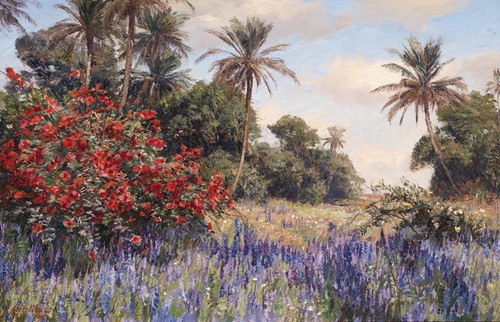
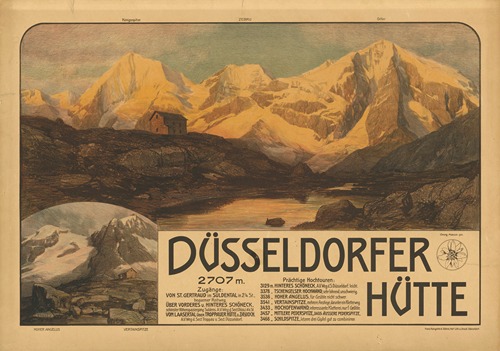


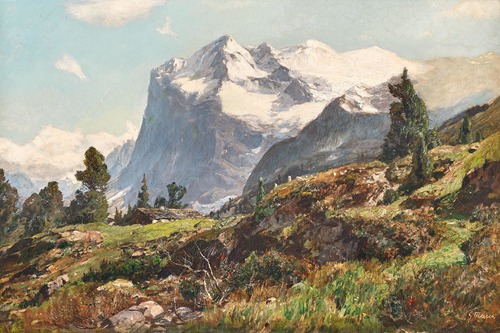
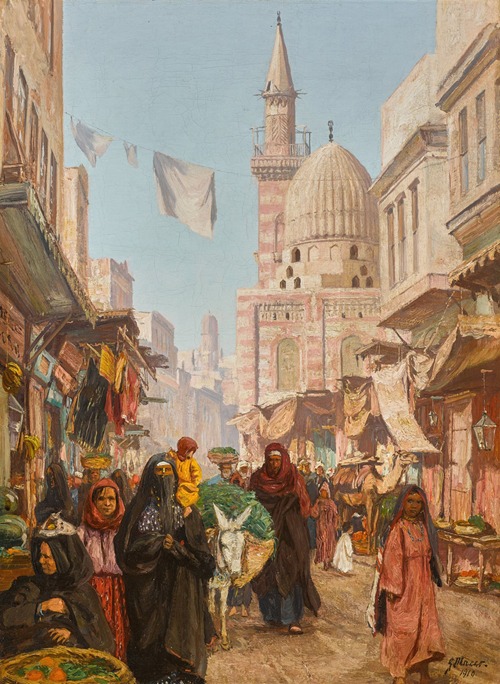
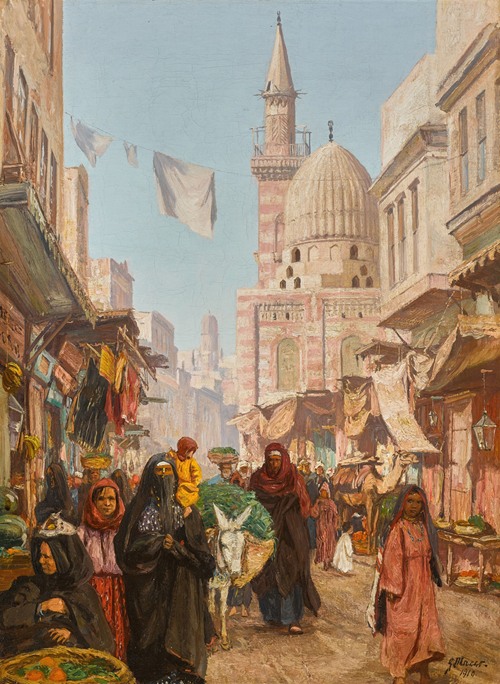
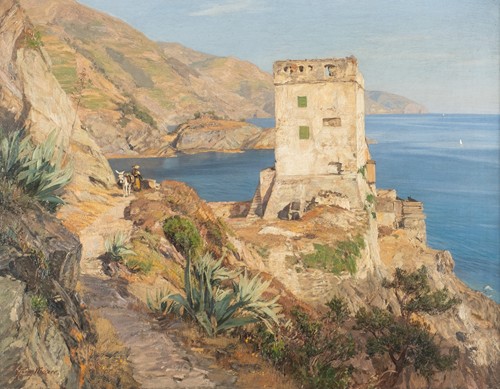
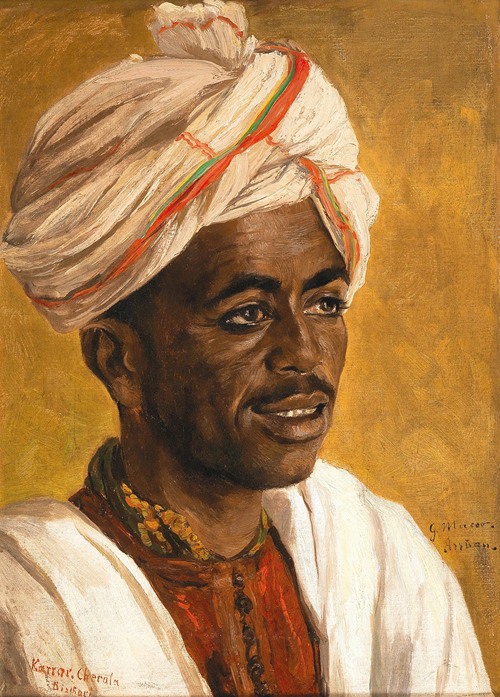
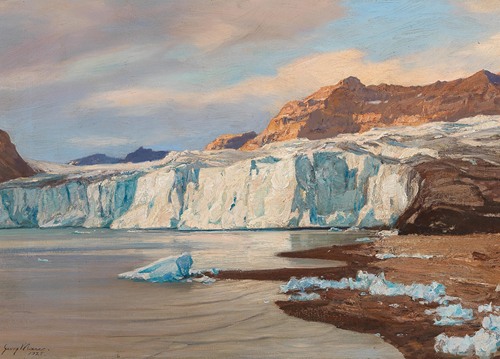
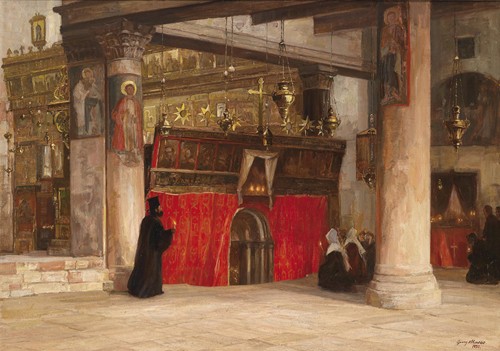

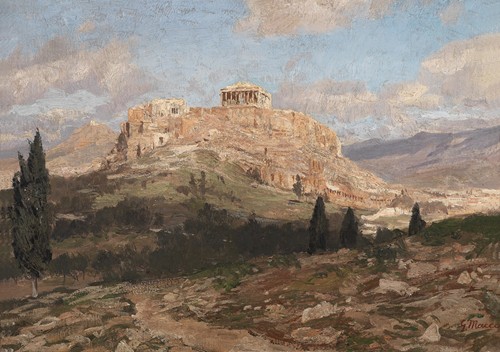
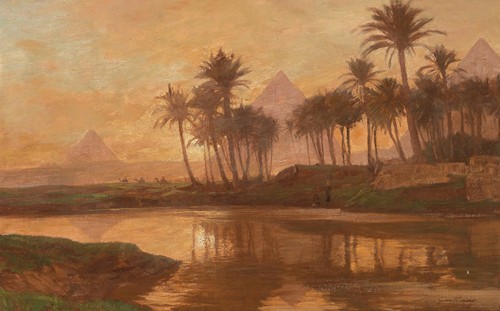
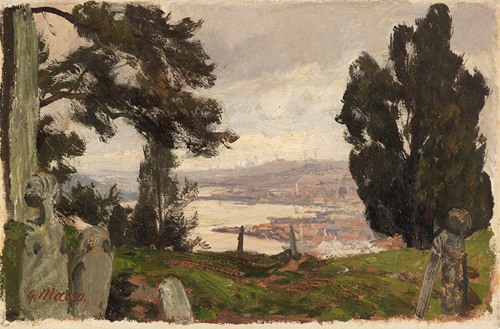
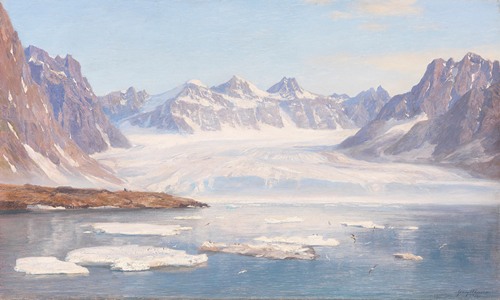
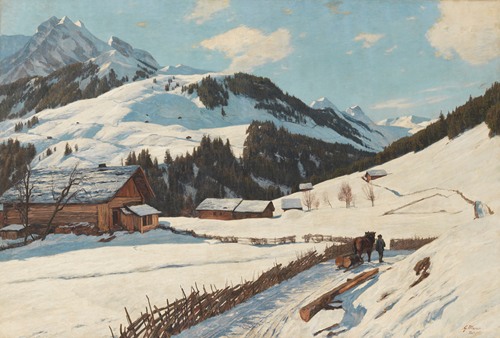
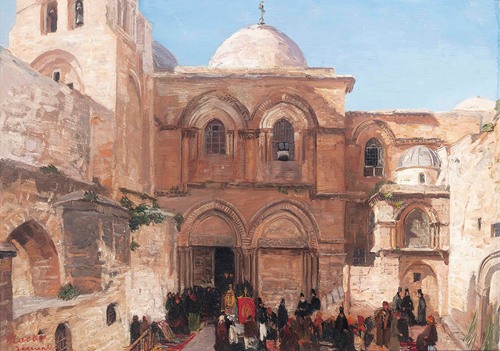
Georg Macco was a German landscape painter and illustrator, associated with the Düsseldorfer Malerschule. He is primarily known for his Orientalist works.
He was inspired by stories of his great-great-uncle, the history and portrait painter Alexander Macco [de], who painted a portrait of the Queen of Prussia and was a close friend of Beethoven and Goethe. His artistic career began at the Kunstakademie Düsseldorf in 188o, where he studied with Eugen Dücker and Johann Peter Theodor Janssen until 1887. During this time, he also contributed illustrations to Die Gartenlaube and drawings of coats-of-arms for his brother, Hermann Friedrich Macco [de], who was an historian and genealogist.
He moved to Munich to further his studies and used that city as a base for his numerous travels, beginning with mountainous regions from Italy to Spitsbergen. Later, he travelled throughout the Mediterranean region, visiting such then-exotic locations as Istanbul, Baalbek, Jerusalem, Cairo and the vicinity of Mecca. The works he produced as a result of these travels would eventually become his most popular and sought after.
His works may be seen at the Kunstmuseum Düsseldorf, the Suermondt-Ludwig-Museum in Aachen, the Rudolfinum in Prague and the Alpines Museum [de] in Munich. Some of his works in Aachen were previously on the "Schattengalerie" (shadow gallery) list of works looted by the Nazis during World War II. Other works, not yet displayed, have been uncovered at the Simferopol Art Museum.

















